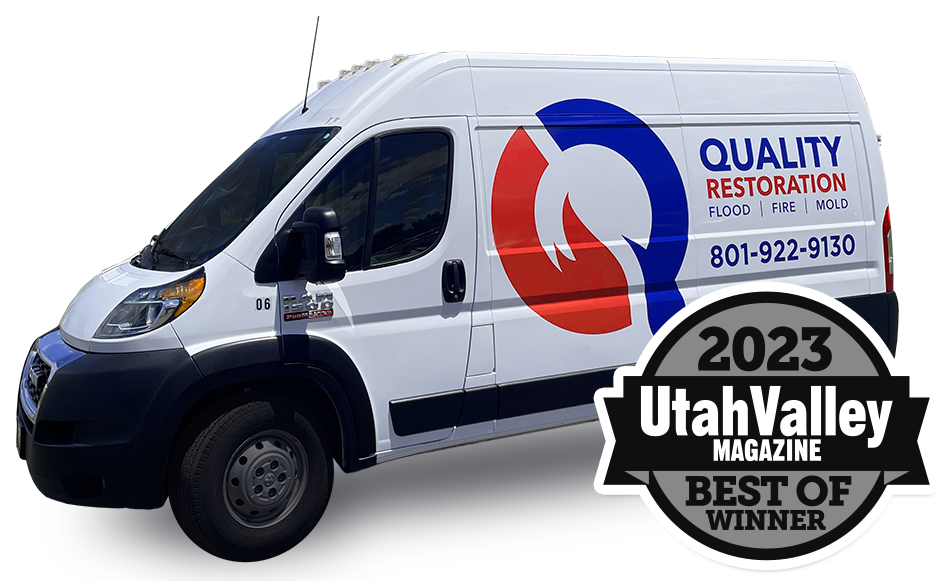If your property has been affected by water damage, you may wonder if the consequences are irreversible. Water damage can range from minor leaks to catastrophic floods, resulting in severe structural damage. In this section, you will learn how to determine if your water damage is permanent and what steps you can take to restore your property.
Water damage can have a lasting impact on your property, leading to mold growth, discoloration, and foul odors. It’s crucial to recognize the signs of permanent water damage to address the problem as soon as possible.
Key Takeaways:
- Water damage can have varying degrees of permanence.
- Understanding the different types of water damage is crucial to determining the extent of the damage.
- There are visible and less apparent signs of permanent water damage.
- Assessing the damage and seeking professional assistance is essential for proper restoration.
- Prompt action can prevent further harm to your property.
Understanding Different Types of Water Damage
Water damage can originate from many sources and have varying degrees of severity. The type of water damage usually corresponds to the root cause.
| Type of Water Damage | Causes |
|---|---|
| Flood Damage | Heavy rain, melting snow, coastal storm surges, and inadequate drainage systems. |
| Leak Damage | Cracked or damaged pipes, burst water supply lines, and clogged gutters. |
| Moisture Damage | Humidity, condensation, and poor ventilation resulting in mold and mildew. |
Other common causes of water damage include:
- Plumbing issues such as malfunctioning appliances and faulty water heaters.
- Natural disasters like hurricanes, tornadoes, and earthquakes.
- Human error such as leaving faucets running or overflowing bathtubs.
It’s important to identify the type and cause of water damage before proceeding with restoration efforts. Failure to address the root of the problem could result in recurring water damage and costly repairs.
Take a look at the image below to better visualize the different types of water damage.
Signs of Potential Permanent Water Damage
Water damage can wreak havoc on your property, and if it’s not treated promptly, it can lead to long-term consequences. Here are some signs that suggest your water damage may be permanent:
- Visible Mold: Mold growth is one of the most apparent signs of water damage. If you notice black or green spots on your walls, floors, or ceiling, it’s highly likely that water has been trapped in these areas for too long, and they are showing signs of permanent damage.
- Structural Damage: Water damage can cause walls, ceilings, and floors to weaken and even collapse. If you notice any sagging, warping, or buckling in these areas, it’s essential to act immediately to prevent further damage.
- Discoloration: Stains and discoloration on walls, floors, or ceilings indicate long-term water damage. This typically happens when water is left to pool or accumulate in one area, causing the material to degrade and discolor.
- Musty Odors: Persistent musty or moldy smells are signals of water damage that may not be visible to the naked eye. These odors can arise when internal materials become damp and begin to rot, leading to permanent damage to your property.
- Persistent Dampness: If you notice an area that remains consistently damp or moist despite your attempts to dry it, this is an indication that water damage is persistent. The longer a damp area remains untreated, the higher the chances of permanent damage.
If you notice any of these signs of permanent water damage in your home or business, it’s vital to take swift action to prevent further damage. Professional water damage restoration services can help you assess the severity of the damage and determine the best course of action to restore your property to its pre-damage condition. Remember, swift action can save you time, money, and stress in the long run.
Assessing the Extent of Water Damage
When it comes to evaluating water damage, it’s crucial to take action promptly. Ignoring water damage may result in permanent damage to your property, leading to costly repairs. Here’s how you can assess the extent of damage:
- Identify the extent of water intrusion- how far did the water travel from the source, and which areas are affected?
- Check for mold and mildew growth on surfaces affected by water damage. These fungi can cause respiratory issues and allergic reactions, and they often thrive in moist environments.
- Inspect walls, floors, and ceilings for discoloration, warping, and stains. These signs may indicate water damage and require a thorough evaluation.
- Use moisture meters to check for hidden moisture in walls and floors. Moisture meters can detect dampness in materials that may not be visible to the naked eye.
While certain water damage assessment tasks can be performed by homeowners, it’s essential to consult with a professional for a complete evaluation. Skilled professionals utilize specialized tools and expertise to conduct an in-depth inspection and provide recommendations for repair and restoration.
Conclusion
Now that you understand the varying degrees of water damage permanence and how to evaluate the extent of the damage, you can take the necessary steps to restore your property and prevent further harm. It’s essential to address water damage promptly to avoid potential permanent damage, such as mold growth and structural instability.
If you’re unsure about the severity of the water damage, it’s always best to seek professional advice and assistance. They have the necessary expertise and equipment to evaluate and restore your property efficiently.
In conclusion, when it comes to water damage, the sooner you act, the better. By taking the right steps, you can prevent permanent damage and ensure your property remains safe and habitable. We hope these final thoughts on water damage have been helpful in guiding you towards the right direction.
FAQ
Is water damage permanent?
Water damage can be permanent, depending on various factors such as the severity, duration, and promptness of response. It is important to assess the extent of the damage to determine the necessary steps for restoration.
What are the different types of water damage?
There are various types of water damage, including floods, leaks, and moisture buildup. These can be caused by plumbing issues, natural disasters, or faulty appliances.
What are the signs of potential permanent water damage?
Signs that may indicate permanent water damage include mold growth, structural damage, discoloration, musty odors, and persistent dampness.
How can I assess the extent of water damage?
To assess the extent of water damage, you can inspect affected areas such as walls, floors, and ceilings. It is advisable to seek professional assistance for a thorough evaluation.
What are the final thoughts on water damage?
Water damage can have varying degrees of permanence. By understanding the types of water damage, recognizing potential permanent damage signs, and properly assessing the extent, you can take appropriate steps for restoration and prevent further harm. Consultation with experts is recommended for professional advice and assistance.




















